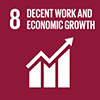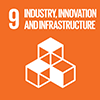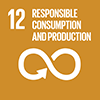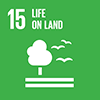June 2022 - You are accessing an old version of our website. The SDGs Voluntary Commitments have been migrated here: https://sdgs.un.org/partnerships
You will be redirected to the new Partnership Platform in 10 seconds.
June 2022 - You are accessing an old version of our website. The SDGs Voluntary Commitments have been migrated here: https://sdgs.un.org/partnerships
You will be redirected to the new Partnership Platform in 10 seconds.
Kawaba `Green Value Program` - Local Japanese economic revitalization and forest conservation through collaboration between industry, academia and local government. Project to create sustainable forestry, biomass power generation, greenhouse agriculture and carbon offset credits. SDG# 15.
After being introduced by Tokyo University of Agriculture who was consulting to both, Kawaba Village, Tokyo University of Agriculture and Shimizu Corporation collaborated on a project to create a new model agriculture village with a focus on forest conservation, reducing global warming through biomass electrical generation and carbon offset, and creating economic stimulus to rural villages in Japan.
The Green Value Program (GVP) has contributed to forest management (SDG15.1, 15.4) through thinning to improve flood control and prevent landslides by improving water retention. The local economy has benefited from infrastructure improvement through the building of an efficient 9,600 square meter sawmill and wood chipping complex, a 45kW biomass thermoelectric power generator (SDG7.1,7.2,12.2) and a 2000m2 greenhouse facility that leverages waste heat to grow strawberries which are sold through local channels. Wood chips are also sold to fitting makers, village residents are employed at the facilities (SDG8.3) and local students are engaged in forest grooming in spring and fall. Carbon credits for energy generation are applied back to Shimizu (100 ton-CO2e) (SDG9.1,9.4,13.2). Through the power generation Kawaba has a back-up energy supply in case of an emergency and sells electricity to their sister city in Tokyo, Setagaya.
This is an example of government, academia and private sector collaboration to meet multiple SDG challenges and create a new model of sustainability.
Following an introduction in 2012 by Tokyo University of Agriculture who was consulting to both, the Green Value Program was designed by Kawaba Village, Tokyo University of Agriculture and Shimizu Corporation and is a successful example of a joint venture between industry, government, and academia. The ongoing project is jointly-funded by Shimizu and Kawaba. Shimizu provides technical expertise and guidance and Kawaba provides the land, workforce and manages the facilities.
Following the agreement to create the model village in 2012, “Wood Village Kawaba Co, Ltd” was established and incorporated in 2015. Wood Village Kawaba opened its sawmill in April 2016 and began producing wood chips and in November began growing strawberries in their greenhouse which are sold outside of the local roadside station farmers market. In April 2017 they began generating electricity with their 45 kW biomass generator and selling it to Setagaya city. In 2018 the project was awarded the Japan Resilience Award.
Since incorporation, regular evaluation of is done of the output results and business performance. Twice a month the facilities are open to the public for a 90 minute tour which showcases the work being done.
Sawmilling facility: Wood Village Kawaba has created local employment by upgrading of the process efficiency of sawmilling by utilizing low quality timber (the unit price has increased 4x) for chips and wood products (such as desks for local students). Exporting of timber is planned to further expand sales channels.
Wood biomass power generation facility: Wood Village Kawaba is selling locally generated electricity to 40 households in Setagaya city in Tokyo (370,000 kWh) and further deepening their already strong relationship. Through Shimizu Wood Village Kawaba has also introduced advanced technology for renewable energy to a local community.
Agricultural greenhouse: Wood Village Kawaba uses the waste heat from the wood biomass power generation facility to produce agricultural products, primarily strawberries, during the winter time.
Wood Village Kawava was realized through sharing know how with stakeholders below:
・Shimizu Corporation: Sharing technological expertise and some upfront investment
・Tokyo University of Agriculture: Providing introductions
・Kawaba Village: The mayor has actively promoted the Wood Village to the local community
・Forest owners’ union: sharing information regarding supplying lumber
Challenges related to cost and scale of the renewable energy source were overcome thanks to a successful search of the niche market manufacturing small scale biomass thermoelectric generators.
Wood Village Kawaba is creating renewable energy by using the leftover wood from the sawmill for biomass power generation, the remaining waste heat is used for the greenhouse.
The forest thinning will play a role in disaster prevention by preserving the biodiversity of the forests and improving water retention through forest management.
The electrical facility also provides resiliency as a local back-up energy source in case of disaster. While the scale of the power generated is small given cost constraints, it is being fully utilized and is economically sustainable by a small town.
This model is replicable to other villages and towns in Japan and Shimizu Corporation is currently looking for other communities interested in the project.
Wood Village Kawaba has become a profitable business by utilizing the value from the forest while also playing a role in forest maintenance. The village contributes to SDGs by collaboration with their stakeholders in industry, government, and academia for ecosystem integrity, creating renewable energy, providing employment, and CO2 offset.
Wood Village Kawaba is an example of a sustainable development approach through local and private enterprise investment rather than donations or subsidies
Wood Village Kawaba website (available only in Japanese)
http://woodvillage-kawaba.com/
Received special prize at Japan Resilience Award 2018
(Kawaba village, Tokyo University of Agriculture and Shimizu Corporation) (available only in Japanese)
http://www.resilience-jp.biz/award/winners-2/#title03
Sightseeing introduction to Kawaba Village
http://kanko.vill.kawaba.gunma.jp/english/index.html






 Start: 01 February, 2012
Start: 01 February, 2012 Completion: 01 April, 2017
Completion: 01 April, 2017